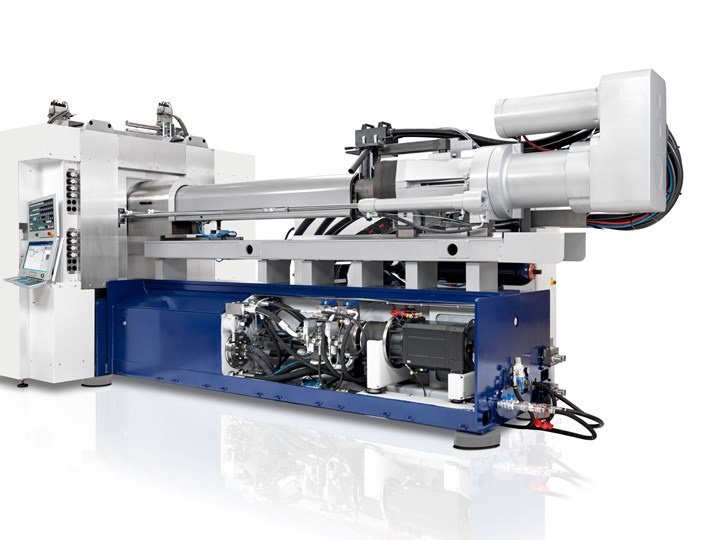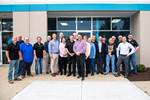Adaptive Pressure Reduction Boosts Injection Molding Machine Efficiency
Netstal says its new adaptive system-pressure-reduction option lowers pressure in a machine’s hydraulic system to its optimum point.
Netstal says its new adaptive system for pressure reduction determines the optimum operating pressure in the hydraulic system for an injection molding machine. Available as a new option for hybrid presses, as well as being retrofittable, the feature lowers power consumption without impacting productivity, serving to lower the machine’s CO2 footprint while generating a speedy return on investment.
Netstal says that to handle peak loads without any problems, the hydraulic system of its hybrid machines is designed for a maximum operating pressure of 250 bar (3626 psi), but, depending on the application, a lower value could also be sufficient. In automatic mode, the adaptive control system determines the optimum point at any time and adjusts the system pressure accordingly.
In addition to using less power, lowering the load on the components can also positively affect machine wear and maintenance intervals. From an investment standpoint, Netstal says that in most cases, the small surcharge for the adaptive system is paid back within a few months, depending on the region and electricity costs. In some regions, investments in more energy-efficient and climate-friendly production facilities are subsidized with government grants.
A Netstal spokesperson told Plastics Technology that in retrofit jobs from a hardware standpoint, accumulators are retrofitted to compensate for pressure differences and achieve a higher lowering potential, depending on the machines. In terms of the impact on power consumption reduction, the spokesperson said that its measurements have shown that, depending on the application, energy savings of approximately 15% are possible.
Adaptive system pressure reduction is available as an option for all hybrid Netstal injection molding machines running the latest aXos version (release 8.6.0).

Netstal’s new adaptive regulation lowers system pressure in the hydraulic system to the optimum point.
Photo Credit: Netstal
Related Content
-
Purpose-Built System Enhances Capacity and Flexibility for Recycler
A Boston recycler invested in a turnkey shredding, granulation and elutriation system to expand its plastics reclaim business.
-
‘Monomaterial’ Trend in Packaging and Beyond Will Only Thrive
In terms of sustainability measures, monomaterial structures are already making good headway and will evolve even further.
-
The Importance of Mass Balance in Chemical Recycling
Approaches to mass balance can dramatically impact calculations of recycled content.















